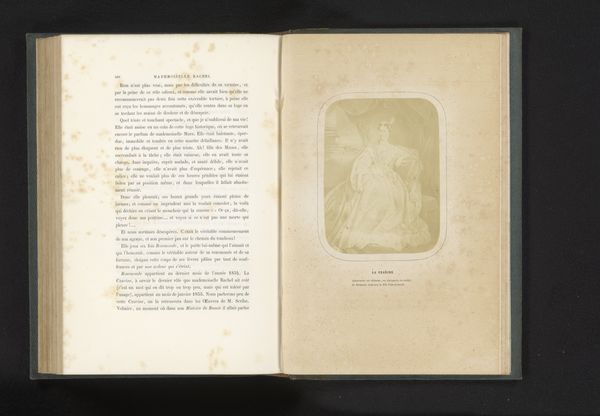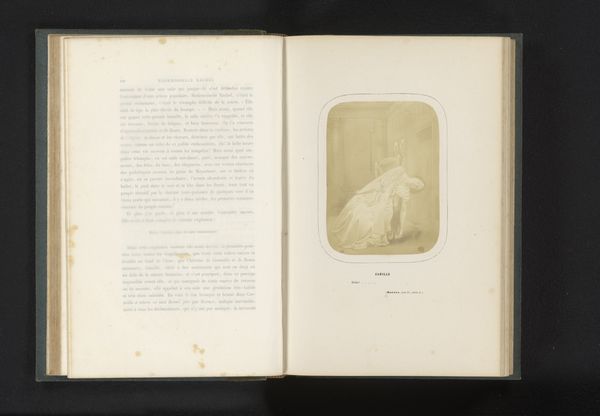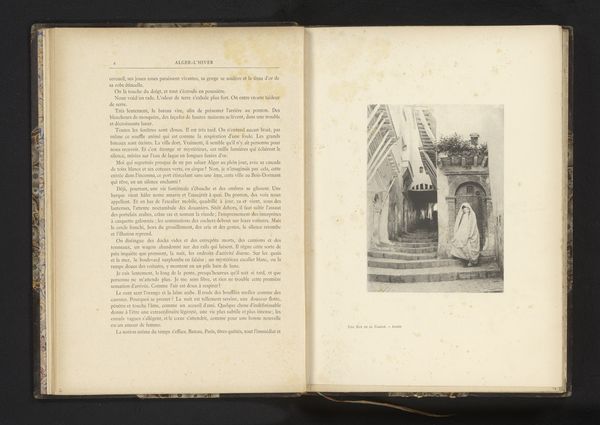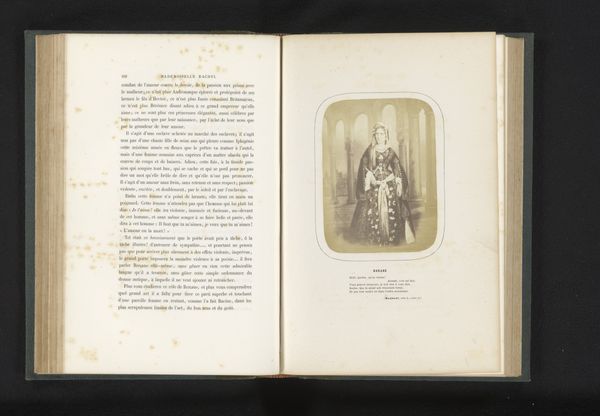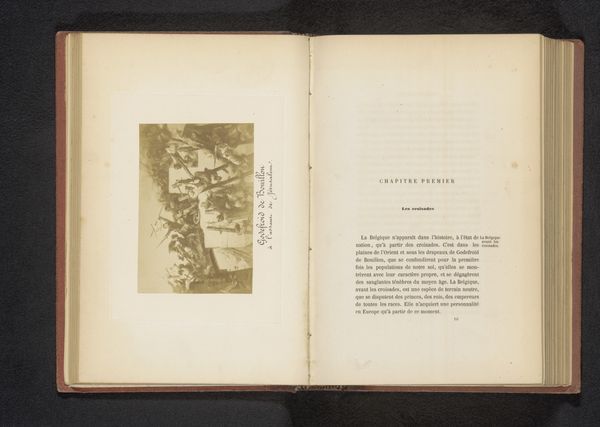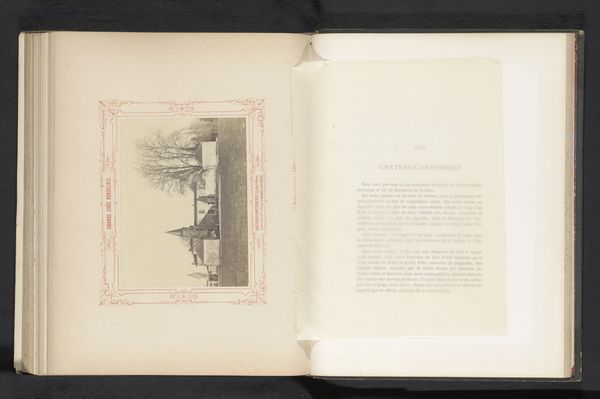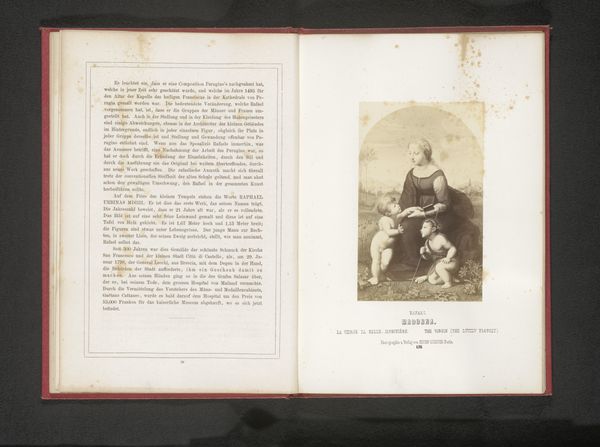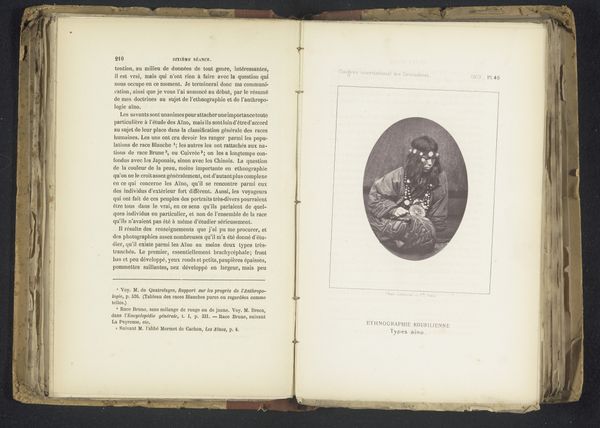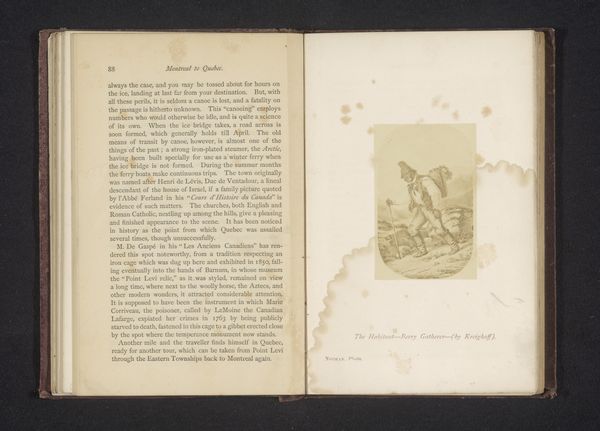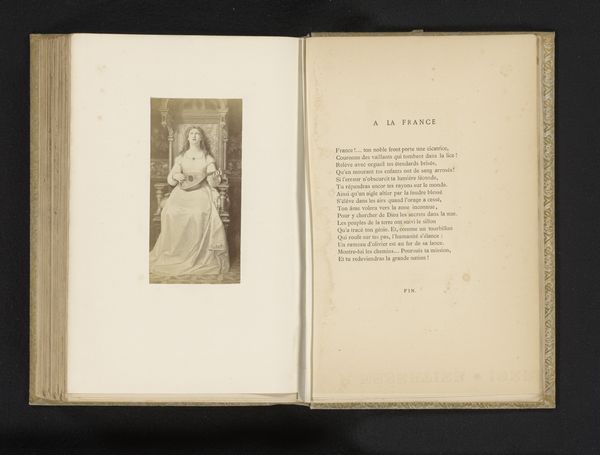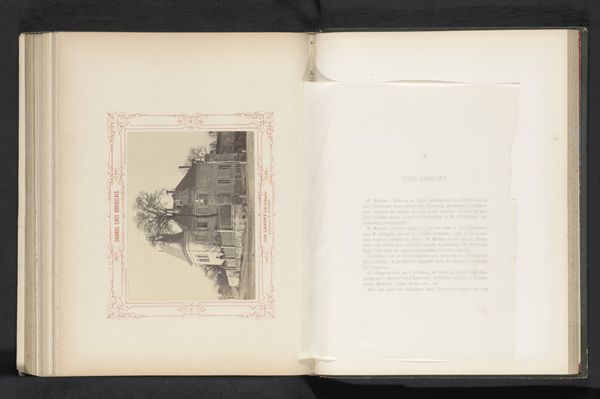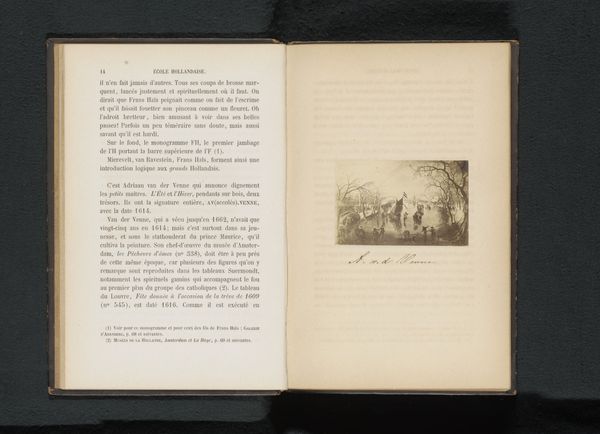
Fotoreproductie van een schilderij met een portret van Elizabeth-Rachel Félix before 1859
0:00
0:00
paper, photography
#
portrait
#
paper
#
photography
#
genre-painting
#
academic-art
#
realism
Dimensions: height 125 mm, width 92 mm
Copyright: Rijks Museum: Open Domain
Curator: Here we have a photomechanical print from before 1859, credited to Henri de La Blanchère. It reproduces a painting depicting Elizabeth-Rachel Félix. It's housed within a book. Editor: There’s an immediate stillness to it. The muted sepia tones and her seated pose create a sense of quiet introspection, almost as if we are viewing a tableau vivant. Curator: Precisely. Notice how the photograph mimics the conventions of academic portraiture – the balanced composition, the sitter's reserved expression, her carefully arranged garments. Editor: It strikes me, though, how much that sense of controlled composition speaks to something much broader. She sits, framed by the soft focus landscape, her hands clasped demurely, creating a carefully cultivated image of bourgeois womanhood. Do you see it also? Curator: I understand. But also consider the tonal gradations; they range from soft creams in the upper ground to somber blacks at the subject’s feet. Blanchère uses a surprisingly comprehensive palette, given the restrictions of photographic reproduction. It’s this tension of light and dark that really makes this reproduction compelling to observe. Editor: I see your point, and appreciate how it pushes my point of view a little bit. Yet there's also something poignant about the choice to reproduce Rachel Felix. We know how adored, and perhaps notorious she was as a tragic actress. There must have been multiple and conflicting notions in that singular printed image for audiences. Curator: A tension indeed. This printed book exists because it allows new owners of artworks or texts a means to replicate and hold an impression of important works in society and culture. A single image is so incredibly complicated and multivalent; it's all there. Editor: The photograph, as you indicate, becomes a vessel, not just holding, but transmitting cultural meanings about gender, performance, and the theater itself, for audiences then and even now. Curator: I find myself captivated anew by the elegance and discipline of its arrangement. Editor: And for me, the lingering resonance of Rachel Felix’s stage presence seems to emanate from the photograph, years after the shutter closed.
Comments
No comments
Be the first to comment and join the conversation on the ultimate creative platform.
